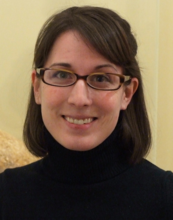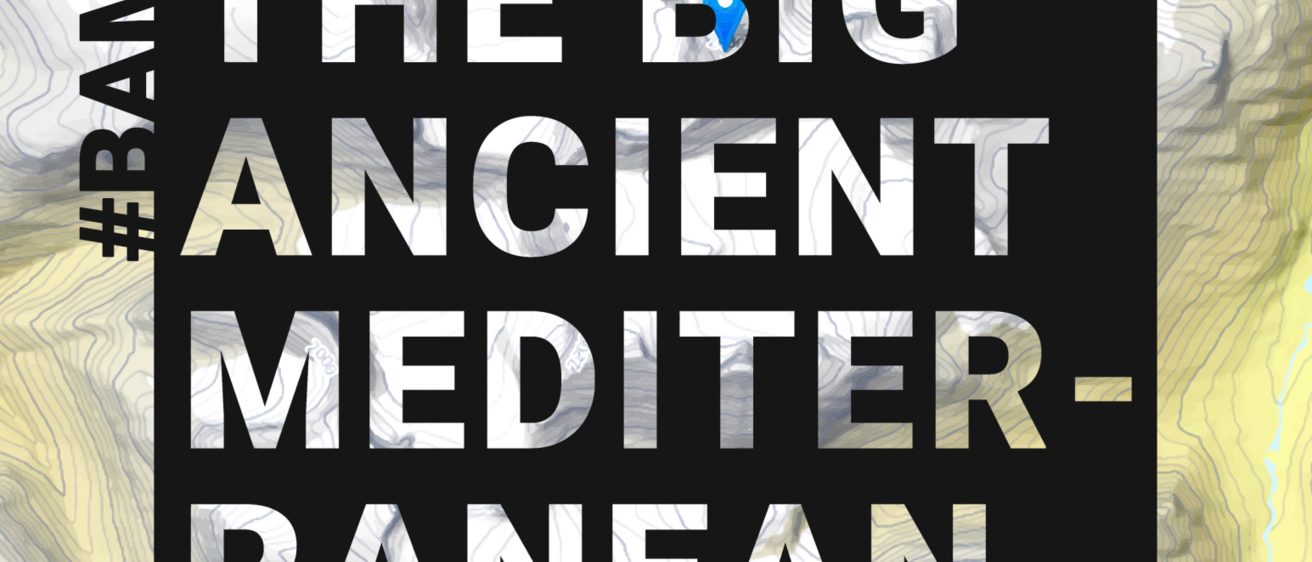Not so long ago, if you wanted to read The Odyssey, you needed several massive—and expensive—tomes: the original text, appendices of endnotes, maps, and family trees, maybe even a Greek dictionary. Today, thanks to digital humanists like Sarah Bond (Classics, CLAS) and Paul Dilley (Classics and Religious Studies, CLAS), you can access many classical texts online, for free, with notes about characters, historical figures, places, and words appearing as you mouse over the text, along with maps and network analyses.

Last year, in conjunction with an Obermann Interdisciplinary Research Grant, the two developed the project, Big Ancient Mediterranean (BAM), along with Ryan Horne (History, UNC–Chapel Hill). Though it doesn’t yet feature The Odyssey, the site offers information about a number of Latin texts, from Virgil’s Aeneid to Augustine’s Confessions.
Open-access projects like BAM—that is, free, open-source, publicly accessible online tools—have become essential to digital humanities research, as they allow scholars to collaborate easily and reach a broad audience. “If we’re using closed tools that only certain people can afford,” says Bond, “then our projects will be accessible only to a small group within the academy. Because BAM focuses on texts that a lot of people are interested in—for instance, the Bible—we want it to be public-facing and to integrate academics, students, and the general public.” Dilley adds that digital tools allow scholars to test old hypotheses as well as to generate new material and new perspectives, citing “distance reading” sites that use algorithms to find patterns within and across texts.

Building bridges
To forge connections between BAM and other digital humanities projects and to give digital scholars working across fields an opportunity to share their expertise and establish best practices for their projects, including a common vocabulary for linked open data, the three organized a public conference, Linking the Big Ancient Mediterranean. The conference—the 2016 Obermann Summer Seminar—took place June 6, 7, and 8 and featured 11 scholars from across the world who have developed open-source projects that help scholars better study classical texts. These researchers shared their work with 15 fellow scholars of classics, geography, GIS, world languages and literatures, and the spatial humanities, discussing both the advantages and challenges of using linked open data in humanities research.
Twenty presentations covered everything from GIS, mapping, and 3D modeling to the development of open-access archives for literary correspondence and data related to the study of coins and currency.
“This project is yours.”
Nico Dogaer, Skyping in from Belgium’s University of Leuven, presented Trismegistos, an open-access site that provides metadata about ancient texts—their authors, sites of discovery, and holding museums; it can even generate “heat maps” showing the frequency of specific place or family names in a text.
Computer scientist Sara Sprenkle from Washington and Lee University presented her NEH-funded Ancient Graffiti Project Search Engine, an open-access site that archives photos of and information about the graffiti found in Pompeii and Herculaneum. Her team of computer science students works with archeologists and classicists to collect and digitize the graffiti images, then translate the inscriptions. She developed the site to provide a humanities-themed gateway for female students to explore computer science, as well as to lower barriers for non-academics interested in ancient graffiti. She noted that the search engine they’ve developed is “for everyone,” not just for those who can travel to Italy or museums or who have knowledge of Latin. Kyle Johnson, designer of the Classical Language Toolkit, echoed this sentiment during his talk: “This project is yours just as much as it is mine.”
Tweet it!
This spirit of collaboration and camaraderie was on full display in the conference’s lively Twitter feed (#BAM2016), as participants live-tweeted events, quoting the presenters, making suggestions, offering resources, asking questions, and sharing information with colleagues around the world. Twitter also allowed project leaders to observe how an audience experienced their sites in real time.
Bond, Dilley, and Horne were especially grateful for the conference’s collegial atmosphere, the willingness of the participants to discuss their failures as well as their successes. “We tend to think that every project is golden from the beginning [because] nobody ever makes their failures public,” notes Bond. “But what does it mean to have failure and to reveal your failures to other people? What do you do with uncertainties in data? It was great for us to hear those stories as a younger project.”
“A lot of work to do.”
The three hope to publish the proceedings of the conference in an open-access online journal and create, in Dilley’s words, “a ‘cookbook,’ or set of instructions, for creating digital projects using linked open data related to the ancient world.” As for BAM, Bond, Dilley, and Horne plan to use what they’ve learned to improve the usability of the site—specifically, to redesign its visual interface and incorporate new functionality (e.g., social networks of the authors in BAM’s Iowa Canon of Latin Authors). They also plan to apply for NEH funding during the next academic year.
A tweet by Michael Satlow of Brown University sums up the conference well: “I'm being blown away, and humbled, by the projects being presented at #BAM2016. Kudos to all! We have a lot of work to do.”
**
The Obermann Center’s annual Summer Seminar program provides funding for a major collaborative project that will result in some form of publication or public work. The seminar director must be a UI faculty member or full-time research staff member.
